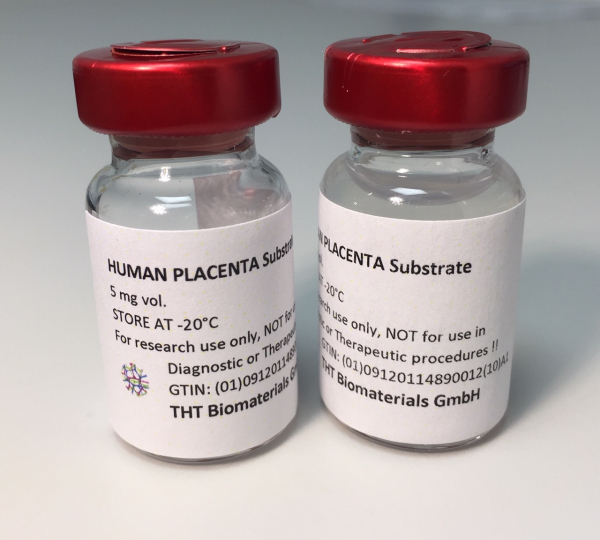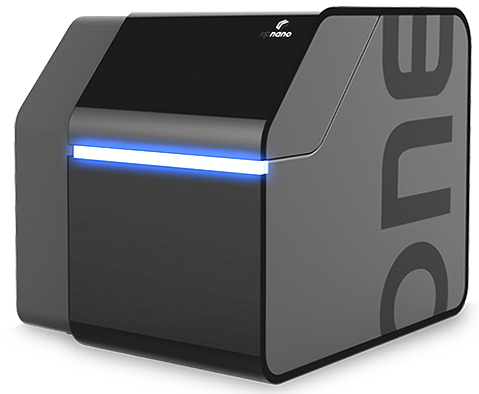A new international consortium called HU3DINKS is rallying behind a single mission: to develop advanced human tissue-based bioinks for 3D bioprinting. Supported by IraSME, a German network of funding programs; FFG, Austria’s national funding agency for industrial research and development; and VLAIO, the Flemish agency for innovation and entrepreneurship, the consortium seeks to replace synthetic and animal-derived bioinks, aiming to lead in the bioprinting revolution.
Many bioinks used in bioprinting come from non-human sources, with collagen and gelatin, both animal-derived, being popular choices. While these materials are biocompatible, they have limitations. For instance, the complex mixture of human tissue, including the extracellular matrix (ECM), glycosaminoglycans, or polysaccharides, is hard to replicate.
In its project database, HU3DINKS states that Matrigel, a well-known gelatinous protein ECM material from Corning, is derived from mouse tumor models. The consortium says its ethically questionable origins, over-expression of growth factors, and batch-to-batch variability render it unsuitable for clinical applications. Therefore, there’s a pressing need for alternatives, not just due to ethical issues surrounding animal testing but also to emulate human tissue processes and conditions more accurately.
While synthetic polymers have been explored, they also have challenges. For example, they present a simplified version of the complexity found in the human body. As a result, there’s a clear gap between in vitro tests using these materials and animal models. In light of this, the HU3DINKS project is venturing into uncharted territories by focusing on creating next-generation human tissue-based bioinks, specifically those derived from the human placenta. In fact, the human placenta substrate developed by The Human Touch (THT) Biomaterials and other humane products will form the basis of the new bioinks in a cruelty-free way.
Johannes Hackethal, founder and CEO of THT Biomaterials commented on LinkedIn about the news: “Working together to bring 3D bioprinting towards the operation theater et al., where it should be. Humanizing medicine for humans on many levels is our daily mission; what else?”
 THT Biomaterials human placenta substrate. Image courtesy of THT Biomaterials.
THT Biomaterials human placenta substrate. Image courtesy of THT Biomaterials.According to the consortium, the potential advantages of using human-derived bioinks in 3D printing are vast. HU3DINKS plans to harness commercially available human tissue-derived materials to create bioinks that can be efficiently used in various printing technologies, notably extrusion and light-based 3D printing processes. These materials would typically be sourced from biobanks that store diverse biological samples; tissue donations made post-surgery or post-mortem; cell culture laboratories that grow human cells in vitro, umbilical cord blood banks rich in stem cells, companies specializing in human tissue products, and even collaborative hospitals and clinics offering samples from medical procedures.
Human tissue-based bioinks are gaining traction in bioprinting. Notable developments include bioinks derived from decellularized extracellular matrices of human tissues, ensuring a more authentic cellular environment. Human-derived gelatin, platelet lysate, and blood plasma have also emerged as promising materials. While materials like alginate and collagen aren’t intrinsically human-derived, they can be combined with human cells to produce bioinks that harness human cellular functionality. Several companies in the sector, including Cellink, RegenHU, Aspect Biosystems, Tissue Labs, and Allevi (now part of 3D Systems), are also developing human tissue-based bioinks. Collaboratively with academic labs, these brands aim to innovate and commercialize bioinks that can integrate human cells for therapeutic and research applications.
Pioneers of the future
A key to the consortium’s success is collaboration. HU3DINKS collaborates with renowned biomedicine firms and institutes such as bioink pioneer BIO INX; MorphoMed, contributing its medical-grade silk technology; UpNano, known for its expertise in Two-photon polymerization (2PP) high-resolution 3D bioprinting, and the Ludwig Boltzmann Institute for Traumatology (LBI Trauma), which plays a pivotal role in validating the new bioinks.
Using the skills of Xpect-Inx and Ghent University, the placenta material is being improved for printing. Silk fibers from Morphomed are added to make it stronger. UpNano is tweaking the printing process and creating special materials for better cell printing. LBI Trauma will test these new bioinks. The goal is to refine commercially available human tissue-derived materials into bioinks that can be seamlessly printed.
 The NanoOne 2PP 3D printer. Image courtesy of UpNano
The NanoOne 2PP 3D printer. Image courtesy of UpNanoAside from the immediate technical innovations, HU3DINKS has many other implications. The consortium envisions a future where bioprinting, supported by human tissue-based bioinks, plays a pivotal role in regenerative medicine, tissue engineering, and personalized healthcare. The goal is to pave the way for groundbreaking healthcare applications.
Jasper Van Hoorick, CEO of BIO INX, says: “However, while still many hurdles need to be overcome to convert these applications to clinical reality, the bioprinting technology already offers solutions in the field of animal-free testing. Here, the ‘human 3D inks’ can make a huge difference to make bioprinting truly animal free.”.
These advancements mean that pharmaceuticals or cosmetics could be tested on 3D printed human tissue models, which provide a more accurate representation of native 3D tissues than traditional 2D cell cultures.
To take bioprinting to new heights, technologies like 2PP are vital. Markus Lunzer, a materials specialist at UpNano, highlights, “the technology has made some tremendous advances in performance but is now mainly limited by the absence of high-performing biological materials. The HU3DINKS project can induce a paradigm shift in the field by truly mimicking the human cellular environment both in terms of architecture and composition.”
Projects like HU3DINKS show the way to a future where human tissue-based bioinks could improve bioprinting. By bringing together experts from all over the world and aiming to move away from animal-based materials, they’re paving the way for exciting breakthroughs in medicine and more.
Subscribe to Our Email Newsletter
Stay up-to-date on all the latest news from the 3D printing industry and receive information and offers from third party vendors.
You May Also Like
3D Printing Webinar and Event Roundup: April 28, 2024
In this week’s 3D Printing Webinar and Event Roundup, the Ceramics Expo is taking place in Michigan, Stratasys continues its advanced training courses, and SPE is holding a Polymer Characterization...
Initial Speakers and Sponsors Announced for Additive Manufacturing Strategies 2025
Nearly a year away from the event, the Additive Manufacturing Strategies (AMS) 2025 conference is already beginning to take shape. Building upon the success of 2024’s summit, AMS has established...
HP & INDO-MIM Collaborate to Boost Metal 3D Printing in India
HP Inc. and INDO-MIM, a US- and India-based supplier of metal injection molding (MIM) powders and contract manufacturer, have announced that the two companies will collaborate to accelerate additive manufacturing...
One of US’s Largest Machine Tool Resellers to Offer Stratasys 3D Printing
In a key move for the additive manufacturing (AM) stalwart, Stratasys (Nasdaq: SSYS) has announced a strategic partnership with Select Additive Technologies, a division of Morris Group, Inc., which is...
































